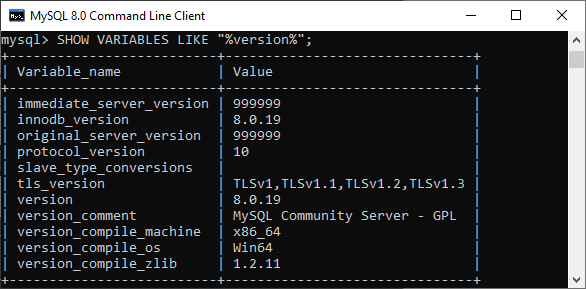Interview :: MySQL
What is MySQL?
MySQL is a multithreaded, multi-user SQL database management system which has more than 11 million installations. It is the world's second most popular and widely-used open source database. It is interesting how MySQL name was given to this query language. The term My is coined by the name of the daughter of co-founder Michael Widenius's daughter, and SQL is the short form of Structured Query Language. Using MySQL is free of cost for the developer, but enterprises have to pay a license fee to Oracle.
Formerly MySQL was initially owned by a for-profit firm MySQL AB, then Sun Microsystems bought it, and then Oracle bought Sun Microsystems, so Oracle currently owns MySQL.
MySQL is an Oracle-supported Relational Database Management System (RDBMS) based on structured query language. MySQL supports a wide range of operating systems, most famous of those include Windows, Linux & UNIX. Although it is possible to develop a wide range of applications with MySQL, it is only used for web applications & online publishing. It is a fundamental part of an open-source enterprise known as Lamp.
What is the Lamp?
The Lamp is a platform used for web development. The Lamp uses Linux, Apache, MySQL, and PHP as an operating system, web server, database & object-oriented scripting language. And hence abbreviated as LAMP.
In which language MySQL has been written?
MySQL is written in C and C++, and its SQL parser is written in yacc.
MySQL has the following technical specifications -
- Flexible structure
- High performance
- Manageable and easy to use
- Replication and high availability
- Security and storage management
- Drivers
- Graphical Tools
- MySQL Enterprise Monitor
- MySQL Enterprise Security
- JSON Support
- Replication & High-Availability
- Manageability and Ease of Use
- OLTP and Transactions
- Geo-Spatial Support
SQL is known as the standard query language. It is used to interact with the database like MySQL. MySQL is a database that stores various types of data and keeps it safe.
A PHP script is required to store and retrieve the values inside the database.
SQL is a computer language, whereas MySQL is a software or an application
SQL is used for the creation of database management systems whereas MySQL is used to enable data handling, storing, deleting and modifying data
There is a major difference between a database and a table. The differences are as follows:
- Tables are a way to represent the division of data in a database while the database is a collection of tables and data.
- Tables are used to group the data in relation to each other and create a dataset. This dataset will be used in the database. The data stored in the table in any form is a part of the database, but the reverse is not true.
- A database is a collection of organized data and features used to access them, whereas the table is a collection of rows and columns used to store the data.
First of all, the MYSQL server is free to use for developers and small enterprises.
MySQL server is open source.
MySQL's community is tremendous and supportive; hence any help regarding MySQL is resolved as soon as possible.
MySQL has very stable versions available, as MySQL has been in the market for a long time. All bugs arising in the previous builds have been continuously removed, and a very stable version is provided after every update.
The MySQL database server is very fast, reliable, and easy to use. You can easily use and modify the software. MySQL software can be downloaded free of cost from the internet.
There are many tables that remain present by default. But, MyISAM is the default database engine used in MySQL. There are five types of tables that are present:
- MyISAM
- Heap
- Merge
- INNO DB
- ISAM
How to install MySQL?
Installing MySQL on our system allows us to safely create, drop, and test web applications without affecting our live website's data. There are many ways to use MySQL on our system, but the best way is to install it manually. The manual installation allows us to learn more about the system and provides more control over the database.
Manual installation of MySQL has several benefits:
- Backing up, reinstalling, or moving databases from one location to another can be achieved in a second.
- It provides more control to how and when MySQL server starts and closes.
- We can install MySQL anywhere, like in a portable USB drive.
How to check the MySQL version?
We can check the MySQL version on Linux using the below command:
If we use the MySQL in windows, opening the MySQL command-line tool displayed the version information without using any flags. If we want to know more about the server information, use the below statement:
It will return the output as below:

In this output, we can see the additional version information about the installed MySQL software like innodb_version, protocol_version, version_ssl_library, etc.
How to add columns in MySQL?
A column is a series of cells in a table that stores one value for each row in a table. We can add columns in an existing table using the ALTER TABLE statement as follows:
